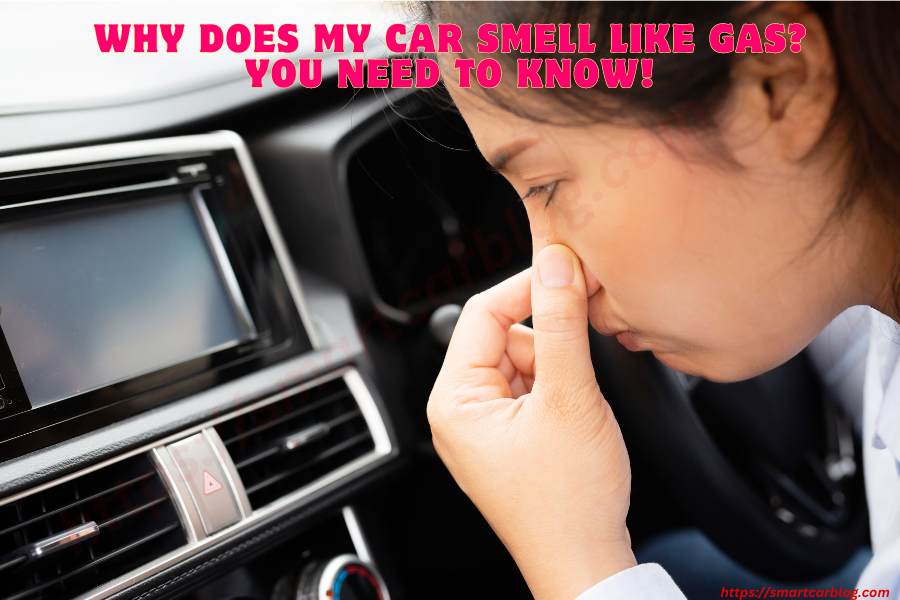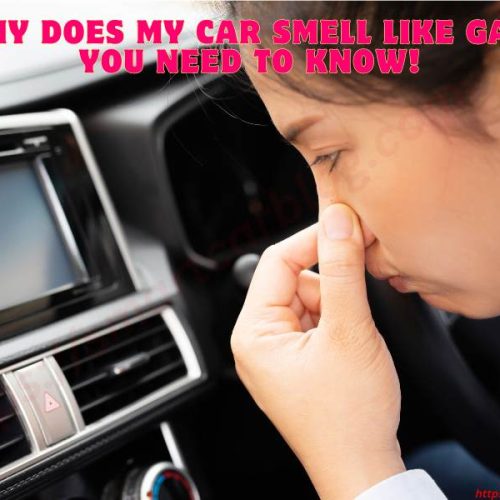Are you having trouble getting your vehicle to start? You might be dealing with a bad starter. This can create some stressful situations as traveling in your car is necessary for many things, such as running errands, taking kids to school, and heading off to work or an important meeting. Instead of freaking out when faced with a dead engine, read this blog post on how to start your car with a bad starter!
Here, we will show you 7 expert techniques, starting from the basics like jump-starting and finishing off with more advanced DIY repairs that could get your car up and running again quickly!
Table of Contents
ToggleUnderstanding the Bad Starter Problem
Dealing with a troublesome car starter? No worries! Before we dive into the techniques to overcome this common inconvenience, let’s first understand what a bad starter is all about and how it affects your vehicle.
So, what does the starter motor do? It’s responsible for kickstarting the engine’s combustion process by turning the crankshaft. But when the starter fails, you might hear an annoying clicking sound or get no response when turning the key. Frustrating, right?
Various factors can cause this pesky problem, such as worn-out brushes, a faulty solenoid, or even electrical issues. Don’t fret, though! By grasping these underlying problems associated with a bad starter, we’ll be ready to tackle them head-on and confidently find the right solutions. Let’s get your car back on track!
Problems of a bad starter
A bad starter can cause several issues that hinder your car’s functionality and leave you stranded. Here are five common problems associated with a faulty starter:
👉Inability to Start: The most obvious problem is the inability to start your car. When you turn the key, you may hear a clicking sound or experience complete silence, indicating that the starter motor is not engaging the engine’s crankshaft.
👉Intermittent Starting Issues: A bad starter can create unpredictable starting problems. Your car may start fine on some occasions, while on others, it may fail to start at all. This inconsistency can be frustrating and make it challenging to rely on your vehicle.
👉Drainage of Battery Power: Continuously attempting to start your car with a bad starter strains your battery. The repeated use of power without successful ignition can drain your battery’s energy, eventually leading to a dead battery.
👉Increased Wear on Ignition Switch: When a starter malfunctions, it can stress the ignition switch more. Over time, this increased wear and tear can cause the ignition switch to fail, resulting in further starting problems.
👉Stalling while Driving: In some cases, a bad starter can cause your car to stall while you’re driving. This can be dangerous, especially in traffic or on a busy road, as it can lead to loss of control and potential accidents.
Recognizing these problems associated with a bad starter can help you troubleshoot the issue and take appropriate steps to get your car back on the road.
Symptoms of a Bad Starter
Identifying the symptoms of a bad starter can help you diagnose the issue and take appropriate action. Here are five common signs that indicate a faulty starter:
⇒ Clicking Sound: When you turn the key to start the engine if you hear a rapid clicking sound but the engine does not crank, it is a clear indication of a bad starter. This clicking noise often signifies that the starter solenoid is engaging, but the starter motor is not functioning properly.
⇒ No Response When Turning the Key: If you experience complete silence when turning the key, with no sound or movement from the starter, the starter has likely failed. This lack of response indicates that the electrical circuit between the ignition switch and the starter motor is disrupted.
⇒ Grinding Noise: When starting the engine, noise can point to a worn-out starter gear or a damaged flywheel. This occurs when the starter gear is not properly engaging with the flywheel teeth, causing a grinding sound as the gears clash.
⇒ Frequent Need for Jump Starts: If your car requires frequent jump starts or has difficulty starting even with a charged battery, it could be a sign of a bad starter. The starter’s internal components may be worn out or experiencing electrical issues, resulting in insufficient power to initiate the engine.
⇒ Smoke or Burning Smell: In severe cases, a bad starter can cause electrical problems that lead to smoke or a burning smell. This typically occurs due to excessive current flow or a short circuit within the starter motor, indicating a serious issue that requires immediate attention.
7 techniques of starting a car with a bad starter
Starting a car with a bad starter can be challenging, but there are several techniques you can try to get your vehicle running. Here are seven methods to consider:
1.The Bump Start Method
The bump start method, or push-starting or pop-starting, is primarily used for vehicles with manual transmissions. When faced with a bad starter, this method can offer a way to get your car running. Here’s how it works: find a flat area or enlist the help of a few people to push the car to gain momentum. Once you have sufficient speed, depress the clutch pedal, put the car into a higher gear (typically second or third), and release the clutch quickly. The momentum generated by the pushing motion can rotate the engine, causing it to start and ignite the fuel-air mixture in the cylinders. This bypasses the need for a functional starter motor.
Note: It’s important to note that the bump start method is unsuitable for vehicles with automatic transmissions and should only be used temporarily. Once the engine starts, remember to drive to a safe location and have the starter issue addressed by a professional mechanic.
2.The hammer method
The hammer method, or the hammer tap technique, is a potential solution to address a bad starter issue. When faced with a non-responsive starter, this method involves using a hammer or a solid object to tap the starter motor gently. The idea behind this technique is to give the starter motor a light tap, which can sometimes dislodge any stuck or seized components. Doing so may temporarily free up the starter motor and allow it to engage properly when attempting to start the engine.
However, it’s important to exercise caution and use a gentle tapping motion to avoid causing damage to the starter or other components. While the hammer method can offer a quick fix in some cases, it is still advisable to have the underlying starter problem diagnosed and repaired by a professional mechanic for long-term reliability.
3.Jump Start
Jump starting a car is commonly used to start a vehicle with a dead or weak battery, but it can also be helpful when dealing with a bad starter. This technique requires a set of jumper cables and a functional vehicle with a good battery. Begin by connecting the positive (red) cable to the dead battery’s positive terminal and the other end to the positive terminal of the working battery. Then, connect the negative (black) cable to the negative terminal of the working battery and the other end to a metal part of the engine block or chassis of the car with the bad starter. Once the connections are secure, start the working vehicle and let it run for a few minutes.
Next, attempt to start the car with the bad starter. The electrical charge from the working battery will bypass the faulty starter, providing the necessary power to turn over the engine. Once the engine starts, leave the recently jump-started vehicle running to recharge the battery.
Remember, jump-starting is a temporary solution, and a professional must address the underlying starter problem to ensure reliable starting in the future.
4.Tapping into the Solenoid
Another technique you can try when facing a bad starter is tapping into the solenoid. The solenoid is a small cylindrical component attached to the starter motor. Start by locating the solenoid, typically near the top or side of the starter. Tap gently on the solenoid housing using a wrench or similar tool.
The purpose of this technique is to jolt the internal components of the solenoid, potentially freeing up any stuck parts. Sometimes, a malfunctioning solenoid can prevent the starter motor from engaging properly. By tapping on the solenoid, you may be able to restore its functionality temporarily and start the engine.
However, remember that this method is not a permanent fix and should be followed up by professional inspection and repair of the bad starter or solenoid.
5.Utilising a Remote Starter Switch
Utilizing a remote starter switch can be a helpful technique when dealing with a bad starter. A remote starter switch is a device that allows you to manually engage the starter motor without using the ignition key. To use this method, first, locate the starter motor and find the solenoid terminal labelled “S” or “SOL.” Connect one end of the remote starter switches to this terminal. Next, connect the other end of the switch to a reliable ground source, such as a metal part of the engine block. Make sure all connections are secure.
Once everything is properly connected, activate the remote starter switch. This will send power directly to the starter motor, bypassing the ignition switch and other electrical components. If the starter motor functions correctly, it should engage, and the engine will start.
A remote starter switch can be a convenient diagnosis of a bad starter. If the starter engages and the engine starts, it indicates that the starter motor is likely in good working condition, and the problem may lie elsewhere in the starting system.
However, it’s important to note that this technique should be used cautiously and only by individuals familiar with using a remote starter switch properly. If you are unsure or uncomfortable with this method, it’s best to seek assistance from a professional mechanic.
6. The Starter Heat Shield Method
The Starter Heat Shield Method is a technique used to address the problem of starter motor overheating. Starters near the engine block can be susceptible to excessive heat exposure, leading to malfunctions and difficulty starting the engine. To implement this method, it is important to ensure the starter’s heat shield is properly installed and secure.
Additional heat shielding materials, such as heat-resistant wraps or reflective foils, can be installed around the starter motor if the shield is damaged or misplaced. These materials act as insulation barriers, reducing heat transfer to the starter and minimizing the risk of overheating. By implementing the Starter Heat Shield Method, you can mitigate the effects of heat on the starter motor and potentially extend its lifespan.
However, it is essential to remember that this technique primarily addresses the issue of overheating and should not be considered a permanent solution. If starter problems persist, it is recommended to consult a professional mechanic for a thorough inspection and appropriate repairs.
7. Examine The Flywheel Of The Engine
The flywheel of an engine plays a crucial role in the starter’s operation and in diagnosing starter-related issues. Let’s explore how to examine the flywheel and what to look out for:
👉 Accessing the flywheel: Depending on your vehicle’s design, you can remove the starter motor or use an inspection cover to access the flywheel.
👉 Inspecting the teeth: Once you can see the flywheel, carefully examine the teeth for wear, chips, or missing teeth. These issues can prevent proper engagement with the starter.
👉 Addressing damage or misalignment: It’s best to replace the flywheel to ensure proper functioning if you notice significant damage or misalignment. Ignoring these issues can result in grinding noises, starting difficulties, or even complete starter failure.
Regularly examining the flywheel helps identify potential problems and ensures smooth starter operation. If you find any damage, it’s recommended to consult a professional mechanic for necessary repairs or replacements. By maintaining the flywheel, you can count on reliable engine starting.
Note: Remember, proper maintenance and regular flywheel inspection are essential for optimal performance.
Also Read: 7 Best Reasons Why Is My Car Overheating? How to Fix Them Easily!
Conclusion
In conclusion, starting a car with a bad starter can be a frustrating experience, but with the right techniques, you can overcome this challenge. We explored various methods to help you get your vehicle running when faced with a faulty starter. From tapping the starter and utilising a remote starter switch to jump-starting the car and examining the flywheel, these techniques offer temporary solutions to get you back on the road. However, it is important to remember that these methods should only be used as temporary fixes. It is crucial to have the underlying starter problem diagnosed and repaired by a professional mechanic for long-term reliability.
While it can be tempting to rely on these techniques repeatedly, addressing the root cause of the starter issue is vital to ensure the smooth functioning of your vehicle. A qualified mechanic can accurately diagnose the problem, whether a worn-out starter motor, a faulty solenoid, or other related issues. They can provide the necessary repairs or recommend a starter replacement if needed.
Remember, starting a car with a bad starter should be viewed as a temporary solution. Prioritize regular maintenance and address any starting issues promptly to avoid further complications. Taking care of your vehicle’s starting system ensures a reliable and hassle-free driving experience.
FAQs
Q1: Can I start a car with a bad starter alone?
Yes, with the right techniques, you can start a car with a bad starter. However, ensuring your safety and following the instructions carefully is crucial.
Q2: Can I drive my car with a bad starter?
While it’s possible to start a car with a bad starter temporarily, driving the vehicle extensively is recommended to fix the issue. Seek professional assistance for a long-term solution.
Q3: What are the signs of a bad starter?
Some common signs of a bad starter include clicking when turning the key, grinding noises, and the engine not cranking or starting.
Q4: How long can I expect a car starter to last?
The lifespan of a car starter can vary depending on various factors, including usage, maintenance, and quality. On average, a starter can last between 80,000 to 150,000 miles.
Q5: Are there any preventive measures to avoid a bad starter?
Regular maintenance, including checking the battery and electrical connections and keeping the starting system clean, can help prevent issues with the starter.




 Welcome to SmartCarBlog.com! I’m Rashel Miajee, The proud founder of smartcarblog.com. This is a part of
Welcome to SmartCarBlog.com! I’m Rashel Miajee, The proud founder of smartcarblog.com. This is a part of 


